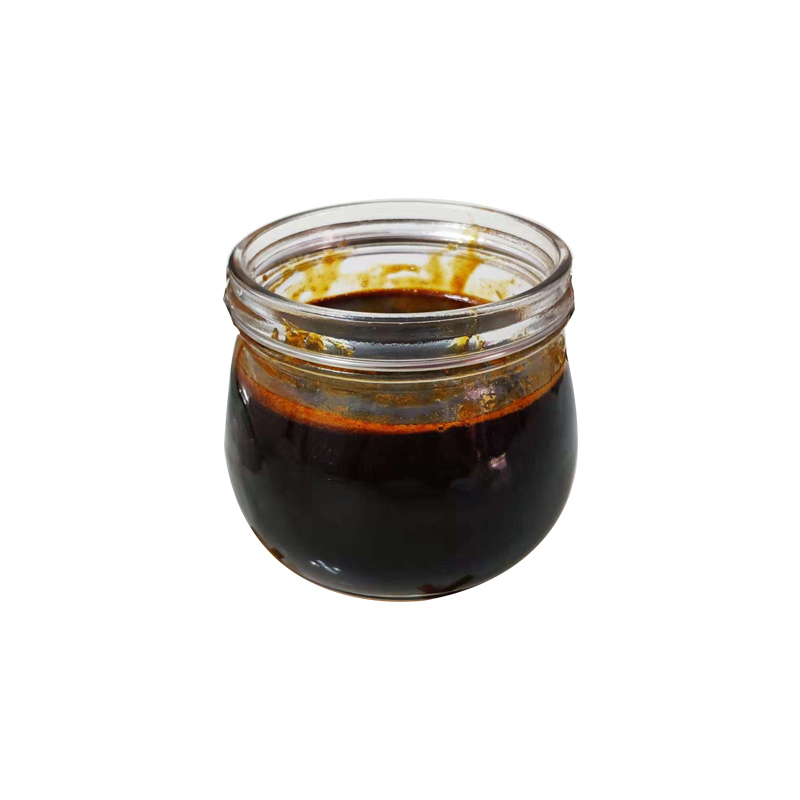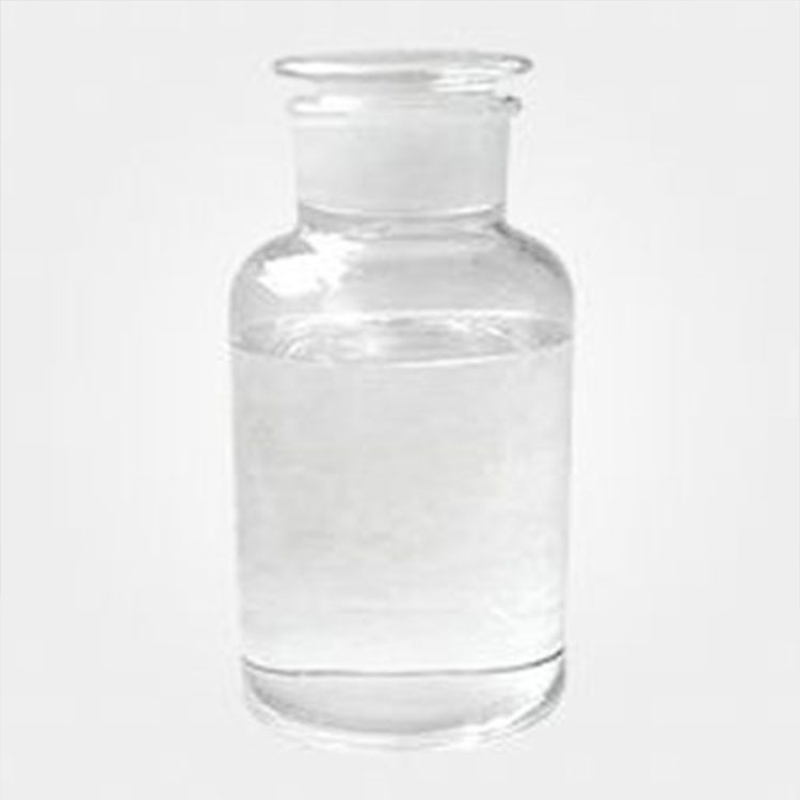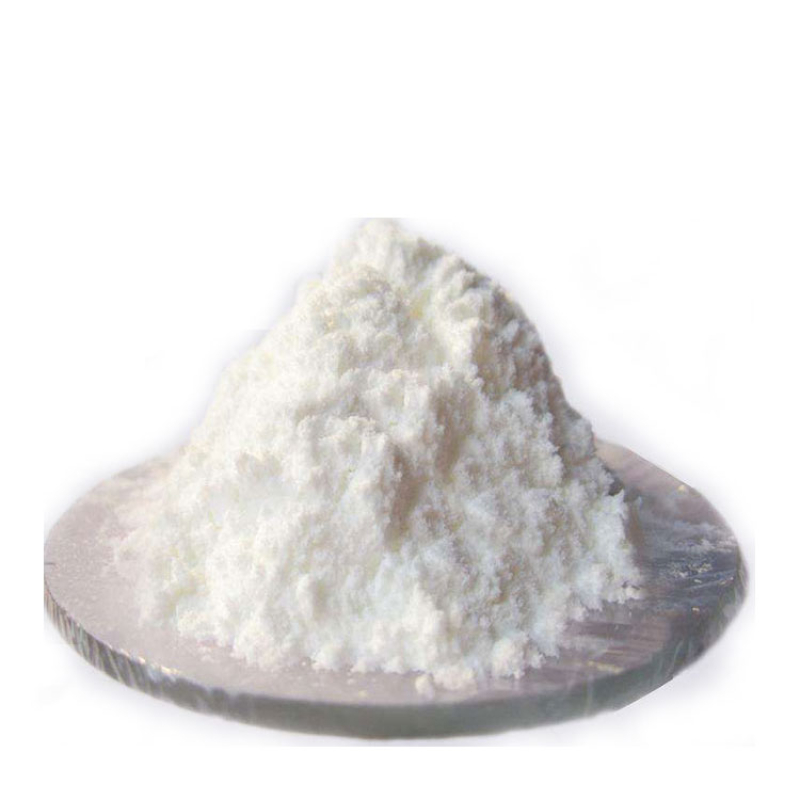Products Description of Monoethanolamine CAS#141-43-52-Hydroxyethylamine, also known as ethanolamine, is an organic compound with the chemical formula C2H7NO.Monoethanolamine Chemical PropertiesMelting point 10-11 °C(lit.)Boiling point 170 °C(lit.)density 1.012 g/mL at 25 °C(lit.)vapor density 2.1 (vs air)vapor pressure 0.2 mm Hg ( 20 °C)refractive index n20/D 1.454(lit.)Fp 200 °Fstorage temp. Store at +15°C to +25°C.solubility Soluble in benzene, ether, carbon tetrachloride.pka9.5(at 25℃)form Liquidcolor
Contact Now
Products Description of Monoethanolamine CAS#141-43-52-Hydroxyethylamine, also known as ethanolamine, is an organic compound with the chemical formula C2H7NO.Monoethanolamine Chemical PropertiesMelting point 10-11 °C(lit.)Boiling point 170 °C(lit.)density 1.012 g/mL at 25 °C(lit.)vapor density 2.1 (vs air)vapor pressure 0.2 mm Hg ( 20 °C)refractive index n20/D 1.454(lit.)Fp 200 °Fstorage temp. Store at +15°C to +25°C.solubility Soluble in benzene, ether, carbon tetrachloride.pka9.5(at 25℃)form Liquidcolor
Contact Now
Monoethanolamine CAS# 141-43-5Ethanolamine is a variety of viscous hygroscopic amino alcohol incorporates each amine and alcohol chemical groups. It is extensively dispensed interior the physique and is a thing of lecithin. It has many sorts of industrial applications. For example, it can be used in the manufacturing of agricultural chemical compounds such as ammonia as properly as the manufacturing of prescription drugs and detergents. It can additionally be used as a surfactant, fluorimetric reagent and casting off agent of CO2 and H2S.
Contact Now
Glycerin For Skin CAS#56-81-5 discover the power of Glycerin (CAS#56-81-5), also known as vegetable glycerine or liquid glycerol, a key component in a wide array of industries.
Contact Now
Products Description of 2,4,5-Trichloropyrimidine CAS#5750-76-52,4,5-Trichloropyrimidine is a new type of reactive dye intermediate raw material and a synthetic raw material for new antibacterial and anti-inflammatory chemical drugs. With the continuous increase in sales of new reactive dyes and new antibacterial and anti-inflammatory drugs, the demand for the raw material 2,4,5-Trichloropyrimidine required for its synthesis is also growing. Therefore, it is particularly urgent to study its synthesis and develop a green new process suitable for industrial mass production.
Contact Now
Products Description of ICHTHOSULFONATE CAS#8029-68-3Ichthyol is a disinfectant and antiseptic drug. It is mainly used for furunculosis in clinical practice. It can also be used for phlebitis and combined with antibiotic ointment to treat early blepharitis. Ichthyol ointment has an anti-inflammatory effect, so it can be applied externally to treat folliculitis.
Contact Now
Products Description of Meglumine CAS#6284-40-8MeglumineChoosing a suitable counter ion for a drug is particularly important for improving the solubility and bioavailability of the drug. Meglumine (N-methyl-D-glucosamine, MChemicalbookeglumine) is a counter ion widely used to improve the solubility of drugs.
Contact Now
Products Description of Ambroxane CAS#6790-58-5Ambroxan is one of the most important components of natural ambergris and has been identified in the aromatic components of ambergris tinctures. Ambroxan has a strong, rich ambergris aroma with mild woody notes. Very good fixative, fragrance with ambergris flavor, as a substitute for natural ambergris. Ambergris is a whale excrement found on beaches and is no longer used in perfume production for ethical reasons. Natural ambroxan is used in perfumes and was discovered in 1949.
Contact Now
Products Description of Natamycin CAS#7681-93-8Natamycin, also known as pimaricin and natamycin, was first isolated from Streptomyces natalensis in 1955. Its activity is far superior to sorbic acid. In June 1982, the US FDA officially approved natamycin for use as a food preservative and classified it as a GRAS product. Natamycin is a highly effective inhibitor of molds, yeasts and fungi. It is used to inhibit molds, yeasts and fungi in food. It is very safe and reliable for the human body and does not affect the flavor of the product.
Contact Now
Products Description of Chromium(III) fluoride CAS#7788-97-8Chromium trifluoride, also known as chromium trifluoride, is an inorganic compound with the chemical formula CrF3. It is mainly used as a mothproofing agent for wool fabrics, a halogenation catalyst, a marble hardener and a colorant.On October 27, 2017, the World Health Organization's International Agency for Research on Cancer published a preliminary list of carcinogens for reference.
Contact Now
Products Description of Cesium Iodide CAS#7789-17-5Cesium iodide, abbreviated as CsI, and inorganic halides including CsI(Tl) are widely used as scintillating media for high-energy particle and ionizing radiation detectors.
Contact Now
Products Description of Antioxidant 168 CAS#31570-04-4Antioxidant 168 is a phosphite antioxidant with excellent performance. It has strong extraction resistance, is stable against hydrolysis, and can significantly improve the light stability of products. It can be used in combination with a variety of phenolic antioxidants. . For example, Cyanox2777 developed by the American company Cyanamid is a compound of antioxidant 168 and phenolic antioxidant 1790. The combined use of phosphite and phenolic antioxidants can give full play to the synergistic effect.
Contact Now
Products Description of Antioxidant 168 CAS#31570-04-4Antioxidants are organic compounds that can inhibit or delay the thermal oxidation of polymers and other organic compounds in the air. Usually, adding a small concentration of 1% antioxidant is very effective. For example, foods are prone to oxidation and deterioration, and a small amount of antioxidants can be added to extend their storage time. Polymer materials such as plastics, synthetic fibers and rubber are prone to thermal oxidation degradation reactions.
Contact Now
Products Description of Molybdenum trioxide CAS#1313-27-5Molybdenum trioxide is an inorganic compound with the chemical formula MoO3. It is mainly used to determine protein, phenol, arsenic, lead, bismuth, etc. It can also be used as a reducing agent for phosphorus pentoxide, arsenic trioxide, hydrogen peroxide, phenol and alcohols. It can also be used to prepare molybdenum salts and molybdenum alloys.On October 27, 2017, the World Health Organization's International Agency for Research on Cancer published a preliminary list of carcinogens for reference.
Contact Now
Products Description of (2-Bromoethyl)benzene CAS#103-63-9β-Bromophenylethane is an important intermediate for the synthesis of highly efficient brominated flame retardant polybrominated styrene, and is also commonly used in the preparation of organic synthesis intermediates. For example, β-Bromophenylethane can be used to prepare 4-(4-phenylbutoxy)benzoic acid, an intermediate for preparing pranlukast. Pranlukast was first successfully developed by Ono Co., Ltd. of Japan as an anti-asthma drug and was launched in Japan in 1995.
Contact Now
Products Description of SILICA CAS#10279-57-9Used as filler for paints and coatings, rubber reinforcing agent, plastic tackifier and thixotropic agent, thickener for synthetic grease and silicone greaseSILICA Chemical PropertiesMelting point 1610 °C(lit.)Boiling point >100 °C(lit.)density 2.6 g/mL at 25 °C(lit.)refractive index n20/D 1.544(lit.)storage temp. no restrictions.form tablets (~0.5 g each)Water Solubility Insoluble in water.Exposure limitsNIOSH: IDLH 3000 mg/m3; TWA 6 mg/m3EPA Substance Registry SystemSilica, h
Contact Now
Products Description of Dioctyl terephthalate CAS#6422-86-2Dioctyl terephthalate (DOTP) is a high-performance main plasticizer for polyvinyl chloride (PVC) plastics. Compared with the commonly used diisooctyl phthalate (DOP), it has the advantages of heat resistance, cold resistance, low volatility, anti-extraction, flexibility and good electrical insulation performance. It shows excellent durability, soap water resistance and low-temperature flexibility in the products.
Contact Now
Monopotassium phosphite CAS#13977-65-6Potassium dihydrogen phosphite, a chemical with the molecular formula KH2PO3, can be used as a direct bactericide and complexing agent for calcium and magnesium ions in industrial circulating water.
Contact Now
Products Description of 1,1,2-Trimethyl-1H-benz[e]indole CAS#41532-84-7It is an extremely important alkaline heterocyclic intermediate for the synthesis of benzindolyl cyanine dyes, and is also a key intermediate for the synthesis of a variety of photovariable dyes.
Contact Now
Products Description of β-Nicotinamide Mononucleotide CAS#1094-61-7Nicotinamide mononucleotide, also called β-nicotinamide mononucleotide (NMN), is a synthetic substrate for coenzyme I. NMN is also used in anti-aging research. Studies have shown that β-NMN can also regulate the secretion of insulin and also affect the expression level of mRNA.
Contact Now
Products Description of Diethylenetriaminepenta(methylene-phosphonic acid) CAS#15827-60-8DTPMPA is used as a scale inhibitor for circulating cooling water and boiler water in water treatment. It is particularly suitable for alkaline circulating cooling water as a scale inhibitor without pH adjustment. It can also be used as a scale inhibitor for oil field injection water, cooling water and boiler water containing high barium carbonate. When this product is used alone in a compound agent, there is no need to add a dispersant, and the amount of dirt deposition is still very small.
Contact Now
Products Description of Sodium hydrosulfideCAS#16721-80-5Sodium hydrosulfide is used in the dye industry to synthesize organic intermediates and as an auxiliary agent for preparing sulfur dyes, in the leather industry to dehair and tan leather, in the fertilizer industry to remove monomer sulfur in activated carbon desulfurizers, in the mining industry to be used in large quantities for copper ore dressing, in the production of artificial fibers for sulfite dyeing, etc.
Contact Now
Products Description of Nonylphenol CAS#25154-52-3Nonylphenol is the most toxic and difficult to biodegrade pollutant among environmental hormones, which has a serious impact on the biological endocrine system. Therefore, the research on nonylphenol detection methods and its toxicological effects has important practical significance for ecological protection and human health.Many advances have been made in the sample pretreatment and determination methods of trace NP and other environmental hormones.
Contact Now
Products Description of Tetradecyldimethylbenzylammonium chloride CAS#139-08-2Benzyldimethyltetramethylammonium chloride is a quaternary ammonium salt used for eye care or treatment of eye diseases. It is an ion association reagent for extraction photometric analysis and a sensitizer for metal photometric determination. It can be dissolved in water and ethanol in any proportion, and can be used with cationic, nonionic surfactants or dyes at the same time. It should not be used with anionic surfactants or additives.
Contact Now




















![1,1,2-Trimethyl-1H-benz[e]indole CAS#41532-84-71,1,2-Trimethyl-1H-benz[e]indole CAS#41532-84-7](https://sdluxicdn.huazhi.cloud/cdn/ff/vCdZL5hgJePL41mQiSGZKs6PuHZLWAvoY27pKNwf9gM/1718385350/public/styles/chanpinzhutu/public/2024-06/%E4%BA%A7%E5%93%81%E5%9B%BE%20%282%29_0.jpg?itok=0rtELXYW)














